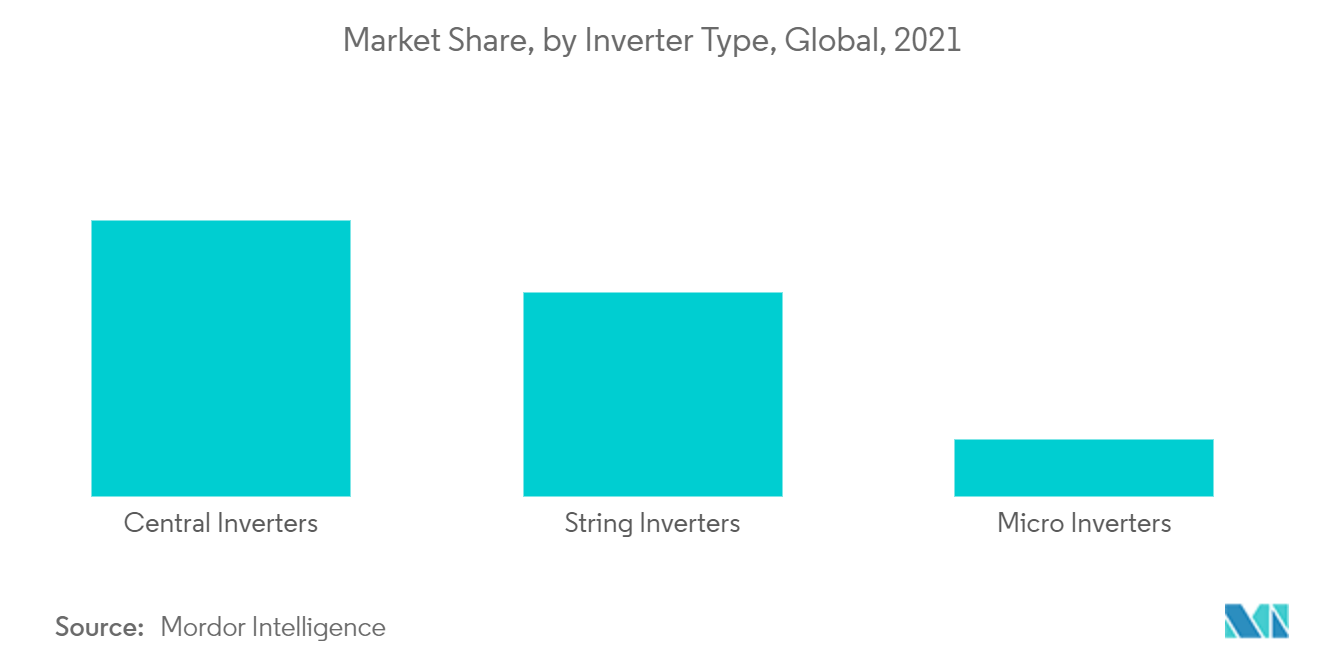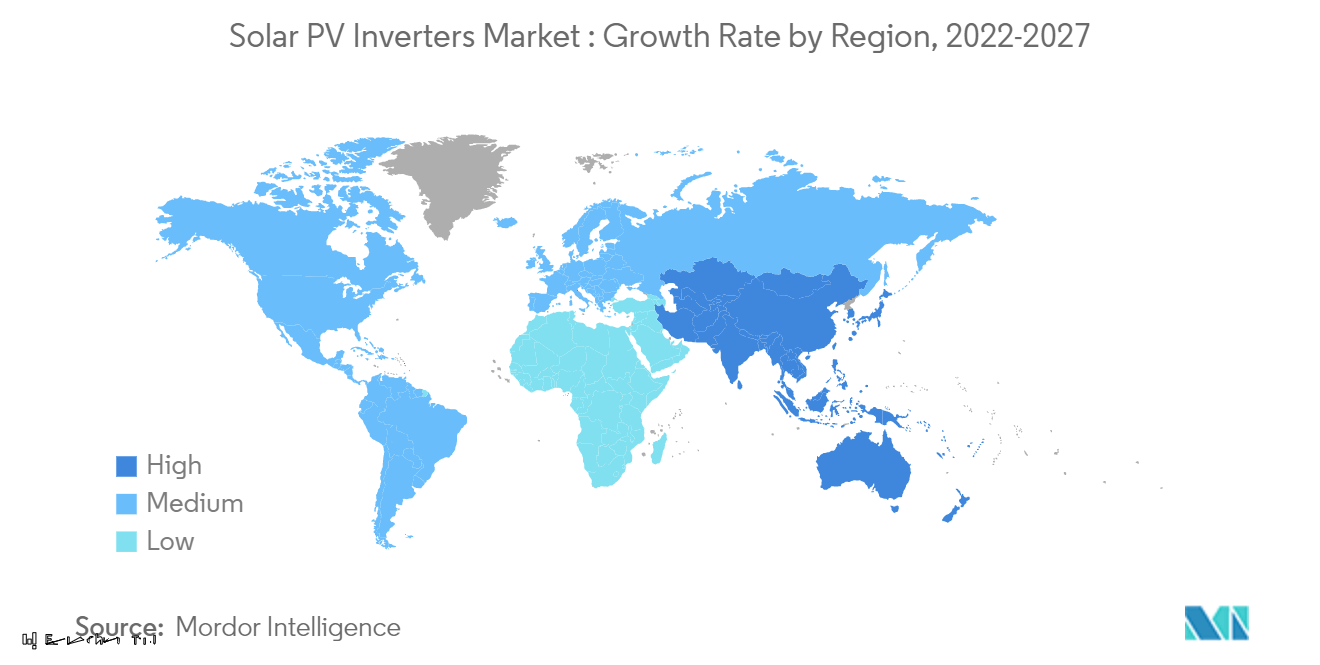Market Trends of Solar PV Inverters Industry
This section covers the major market trends shaping the Solar PV Inverters Market according to our research experts:
Central Inverters Segment Expected to Dominate the Market
A central inverter is a large grid feeder. It is often used in solar photovoltaic systems with rated outputs over 100 kWp. Floor or ground-mounted inverters convert DC power collected from a solar array into AC power for grid connection. These devices range in capacity from around 50kW to 1MW and can be used indoors or outdoors.
A central inverter consists of one DC-AC conversion stage. Some inverters also have a DC-DC boost stage to increase their MPP (maximum power point) voltage range. Low-frequency transformers are sometimes used to boost the AC voltage and provide isolation at the output. However, this reduces efficiency and increases the inverter's size, weight, and cost.
A central inverter typically has a maximum input voltage of 1,000V. However, some newer central inverters already come with 1,500V input voltage. These inverters allow PV arrays based on a maximum voltage of 1,500V, requiring fewer BOS (balance of system) components.
Central inverters can be monolithic (using a single power train and multi-MPPT tracker) or modular (using multiple power trains). Modular inverters are more complex but can maintain reduced power output if one or more modules fail and can use either a multi-MPPT or a master-slave control approach. The multi-MPPT system uses a separate converter and MPPT for each floating sub-array, increasing the overall energy harvest under partial shading conditions. In the master-slave approach, the controller module is always on. It commands the slave modules to switch on when more power is available from the array, which maximizes inverter efficiency in low-insolation environments.
As central inverters are used for utility-scale applications, they should produce the same voltage and frequency as that of the electric grid where they are used. As there are a lot of different electric grid standards worldwide, manufacturers are allowed to customize these parameters to match the specific requirements in terms of the number of phases; most central inverters manufactured are three-phase inverters.
In January 2022, Sungrow launched its new 1+X central modular inverter with an output capacity of 1.1MW at the World Future Energy Summit in Abu Dhabi. This 1+X modular inverter can be combined into eight units to reach a power of 8.8MW and features a DC/ESS interface for the connection of energy storage systems (ESS).
Therefore, the growing demand for electricity, the government's efforts to decarbonize the power sector, and the declining costs of central inverters are expected to drive the segment's growth during the forecast period.

Asia-Pacific to Dominate the Market
Asia-Pacific dominated the solar PV inverter market in 2021, and it is expected to continue its dominance over the coming years. Most of the demand is expected to come from China, which is also the largest producer of solar energy in the world.
There has been an increased emphasis on solar inverters in China, providing a zero-voltage ride through (ZVRT) scheme. To meet the scheme norms, the solar PV power plants must continue to operate without breaking. This is even more significant as the country hosts the largest amount of solar power generation in the world.
With the rising concerns over pollution across the world due to industrialization, especially in Asia-Pacific, regional solar power generation gained considerable momentum. As part of the Paris Agreement commitments, the Government of India set an ambitious target of achieving 175 GW of renewable energy capacity by 2022. Out of the 175 GW, 100 GW was earmarked for solar capacity with 40 GW (40%), which was expected to be achieved through decentralized and rooftop-scale solar projects. To achieve this huge target, the government launched several new programs in 2019, like the solar rooftop phase-2, PM-KUSUM, and the development of ultra mega renewable energy power parks (UMREPPs).
India's solar potential is more than 750 GW, and the country's energy security scenario 2047 shows a possibility of achieving around 479 GW of solar PV installed capacity by 2047. Solar power in India, bestowed with high solar irradiance, has already achieved grid parity that encourages the adoption of solar power as a mainstream energy source, pushing forward the capacity installations in the utility-scale and rooftop solar segments.
As of November 2021, Sungrow Power Supply Co. Ltd has shipped more than 10 GW of solar inverters in India since 2014. This is due to the increased demand for solar energy across the country. In March 2022, Sungrow increased its fab capacity in India to 10GW/annum capacity. Such a large development in the manufacturing sector is expected to boost the growth of the market studied during the forecast period.
Therefore, with various government initiatives launched by China, India, Malaysia, etc., Asia-Pacific is expected to dominate the solar PV inverter market during the forecast period.


